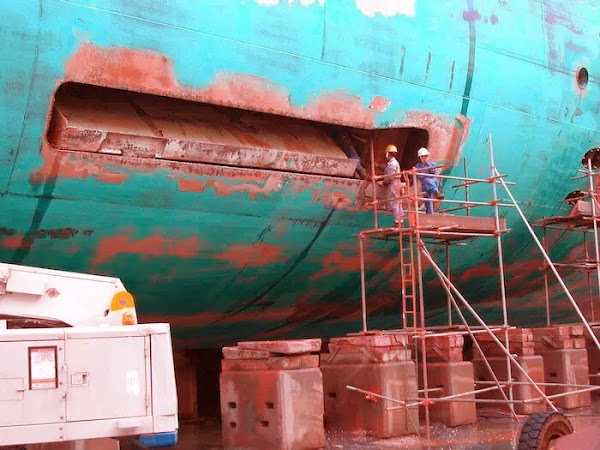#63 Understanding the Fin Stabilizer System on Ships: Components and Operation
Introduction:
Situated at the bottom part of a ship's hull, a fin stabilizer plays a crucial role in minimizing excess rolling in either direction, enhancing stability during maritime operations. Despite its inconspicuous presence, every on-board engineer and officer must possess knowledge about the components and functioning of the fin stabilizer system.
Components of the Fin Stabilizer System:
1. Fins: Two fins are integral parts of the ship's hull structure, one on the port side and one on the starboard side. These fins are operated and controlled from the fin stabilizer room located on both sides of the ship.
2. Fin Stabilizer Machinery Unit: Each stabilizer comprises a fin box housing the fin and supporting the fin actuating machinery. This unit facilitates the rigging, locking, and tilting of the fin, allowing adjustments of up to +/-25 degrees.
3. Hydraulic Power Units: Two hydraulic power units, situated in the stabilizer room on the port and starboard sides, power the fin tilting and rigging motions.
4. Bridge Control Panel (BCP): The BCP, installed in the Bridge Main Control Center (BMCC), provides remote control and indicators for the operation of the fin stabilizer from the bridge.
5. Local Control Units (LCU): Two LCU panels in each stabilizer room offer local indication and control of the fin.
6. Main Control Unit (MCU): The MCU, located in the Engine Control Room (ECR), can control the fins with features similar to the bridge control unit.
7. Roll Motion Sensor Unit (RMSU): Measuring the ship's roll acceleration, the RMSU provides control signals for the roll control algorithm and interfaces with the MCU.
8. Fin Angle Feedback Transmitter: This device provides the fin angle position signal for the servo controller, indicating the fin tilt angle.
Operation of the Fin Stabilizer System:
- Hydraulic Power Unit (HPU): The HPU powers fin tilting and rigging motions, featuring a high-power electric motor driving a variable delivery piston pump. The SCU controls the pump's flow rate, determining the fin's rotational velocity.
- Stroke Control Unit (SCU): Mounted on the variable delivery pump, the SCU consists of a servo motor and gears that control the pump's flow rate. It works in tandem with the LCU for microprocessor-based control.
- Fin Rigging: Solenoid actuated valves control fin rigging, with the HPU facilitating emergency stowage under lower power.
- Operation Control: The fin stabilizer can be operated from the bridge or ECR, with the MCU serving as the active control station in case of BCP failure.
Preparation Before Operation:
Before initiating the Gyro fin Stabilizer System, the Engine Room should ensure:
1. No obstructions to the moving parts of the Stabilizer Machinery.
2. Cooling water is flowing through the Hydraulic Power Unit heat exchanger.
3. All local power isolation switches to controls and pumps are turned ON.



Comments
Post a Comment